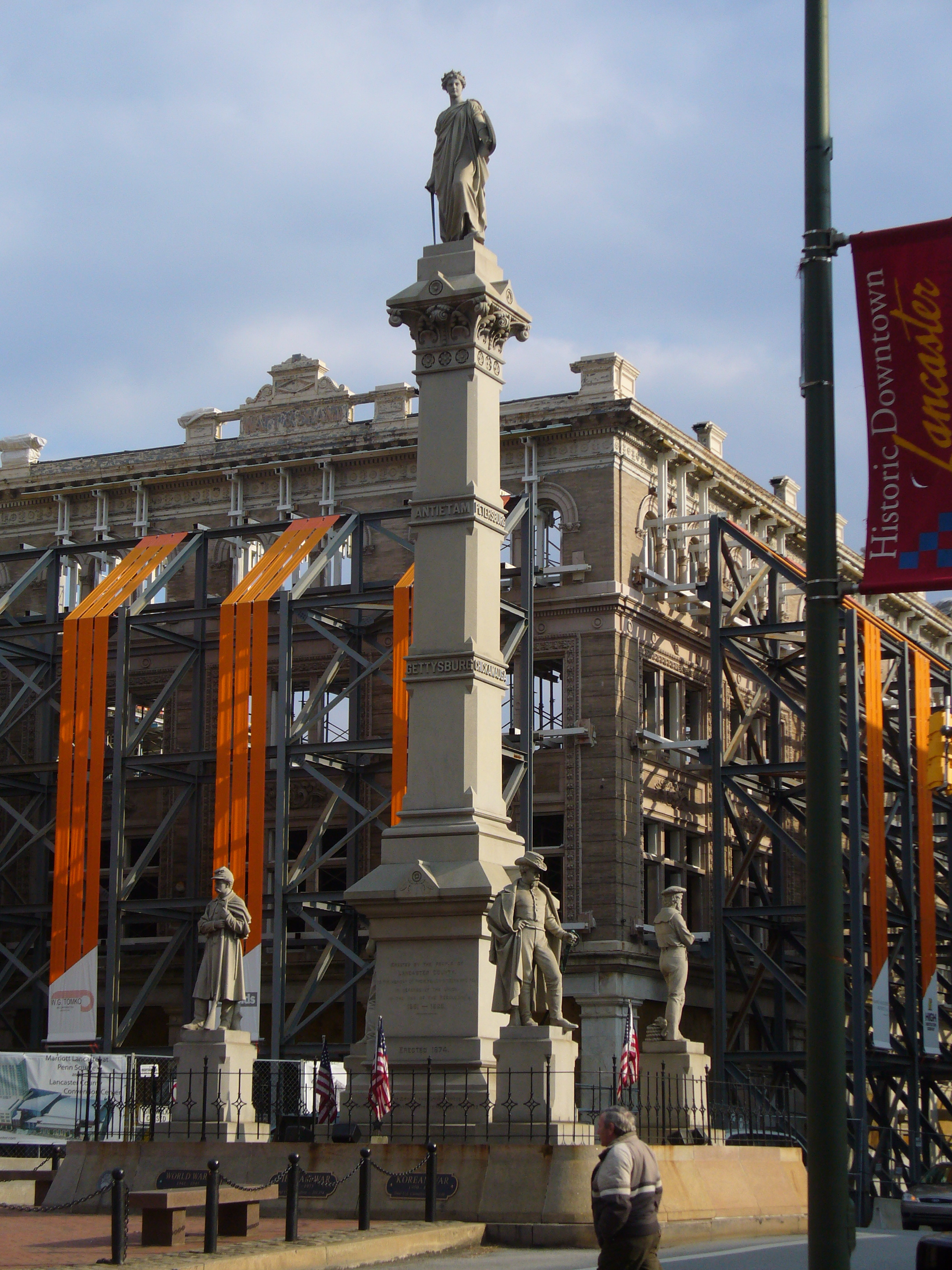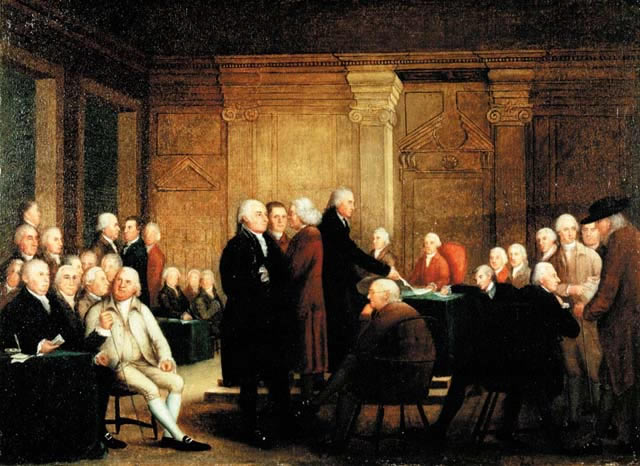
Walking around Washington D.C., there is a feeling of importance and an aura of power that can be overwhelming to the average citizen. The grand, cream-colored buildings tower over government officials as they scurry to the building entrances. The suited figures are a sea of black that moves back and forth around Capitol Hill, signing bills and discussing laws that impact the entire country. The capital’s majestic buildings and atmosphere represent a highly developed nation and the forefront of western society.
However, things were different in 1777, when the young nation was forming. Colonial government officials huddled together in Philadelphia, the nation’s early capital, in large wooden buildings to discuss the mere survival of the colonies and their ideas of what an independent country should be like. The city stood as a foundation for a nation built on ideas of equality and religious freedoms. Unlike those in present-day Washington, DC, government buildings in Philadelphia were rundown and battered, as the survival of political beliefs outweighed plans for restructuring. It was a government with a foundation of ideas, rather than pearly white marble. Yet, as the British forces moved in on Philadelphia to eliminate the colonial administration, the very lack of physical governmental structure allowed government officials to move the capital from Philadelphia to Lancaster with only a few days notice to avoid capture. This move is of great significance to Pennsylvania’s historic culture and an important step in the development of the United States.
During 1777, both British and American forces moved around the colonies but had not yet seen any real confrontation. British commander General Howe had a clear plan to attack Pennsylvania from the south with the prospect of overtaking Philadelphia. With impending attacks on colonial forces, General Washington was forced to move his troops behind Brandywine Creek, located near a village called Chadds Ford. There he had a balanced defense for Philadelphia, along with easily accessible important supply depots vital to the colonial army.
On the morning of September 10, 1777, General Howe and General Washington exchanged artillery fire into the early afternoon. However, while trying to defend a flank attack by Howe’s forces, Washington’s army was speared by General Howe and General Cornwallis at the divisions of the creek, greatly surprising the colonists. To support his troops, Washington responded to the British attack by sending two divisions near the creek to defend against the British. With the aid of these two divisions, colonial forces were able to retreat to the outskirts of Philadelphia. Nevertheless, knowing General Howe and Cornwallis would continue to march straight to Philadelphia, General Washington and the Continental Congress quickly made plans to reestablish the capital in a safer location.

On September 18, 1777, the Continental Congress agreed that evacuation from Philadelphia was vital, and they gathered together to discuss options for the new capital’s location. They concluded that Lancaster, one of the largest cities in Pennsylvania during the time, was the most effective place to move due to its close proximity to Philadelphia and its level of development. The Continental Congress quickly moved to Lancaster, an approximately 65-mile journey westward. The Congress sat on September 27 in the Lancaster County Courthouse. There they discussed the organization of colonial forces, the safety of the current location of the capital, and gaining a greater structure among the colonies. However, during their brief stay in Lancaster, almost every building in the city was housing government officials; with the Congress’ large number of people, members were unable to find ample lodging in the city. That, coupled with a lack of scheduling time due to the extremely busy Lancaster Courthouse, almost immediately prompted Congress to move the nation’s capital even further west to York.
The old Lancaster County Courthouse stood in Lancaster until 1853, before it was rebuilt in an effort to restore its deteriorating condition. Visitors to Lancaster can see the location where the old courthouse stood and where a memorial currently exists. When strolling through the city that briefly held the most important position in the American government’s history, one can view all of the historic buildings where government officials were stationed. The history of how the American nation started and survived over the centuries is an incredible path that has had its struggles and successes. In 1777, the nation could not predict what the United States would become or what the impact it would have on society as it does today. Lancaster becoming the nation’s capital for a day may seem trivial, but it’s these small stepping-stones that allow Americans to live in a country where freedom, justice, and equality prevail.
Sources:
- “About Us.” Lancaster County, PA Government Online. Government System Reform Initiative,6 Apr 2009. 8 Dec 2009 <http://www.co.lancaster.pa.us/lanco/cwp/view.asp?a=15&Q=393956&lancoNav=|>
- Resch, John P., ed. Americans at War. 1. Detroit: Macmillan Reference USA, 2005: 103-105.
- “History of the Battle of the Brandywine.” Brandywine Battle Historic Site. Independence Hall Association, 2010. 8 Dec. 2009 <http://www.ushistory.org/Brandywine/thestory.htm>.
- Fortenbaugh, Robert. The Nine Capitols of the United States. York, PA: Maple Press Company, 1948.
- Fradin, Dennis B. Samuel Adams: The Father of American Independence. New York: Clarion Books, 1998.
- Selesky, Harold E., ed. Encyclopedia of the American Revolution: Library of Military History. 2. Detroit: Charles Scribner’s Sons, 2006: 904-909.
